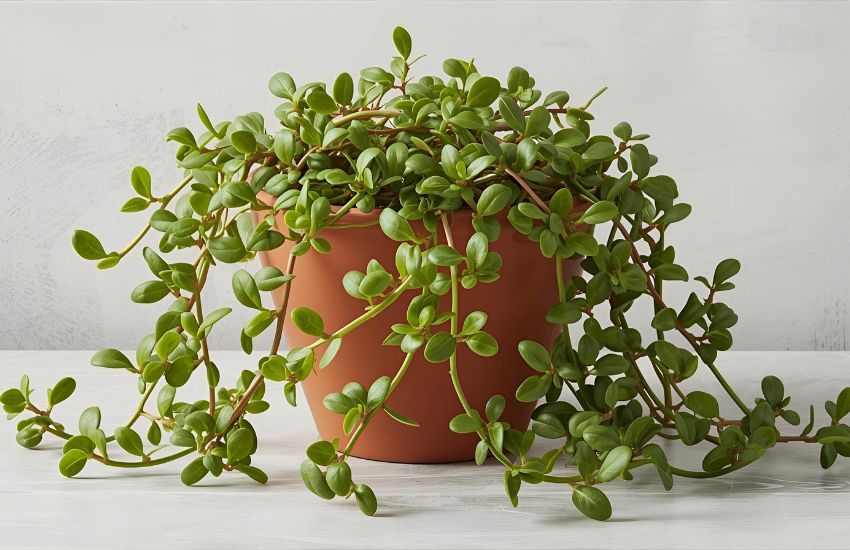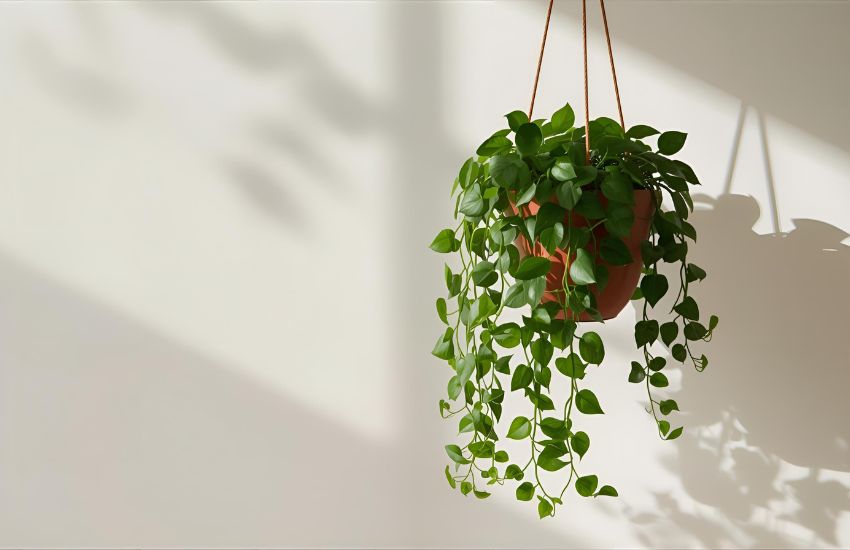If you’re searching for a houseplant that combines charm, uniqueness, and manageable size, the Twisted Hoya offers an irresistible option. Known scientifically as Hoya carnosa compacta, this plant stands out with its thick, curled leaves and distinctive waxy texture, forming a striking, compact foliage that adds elegance to any indoor space. Unlike typical vines, its leaves naturally twist and curl along the stem, creating an eye-catching display that evolves over time.
Twisted Hoya is a unique and compact indoor plant, perfect for modern spaces. Known for its curled, textured leaves and charming growth habit, it adds an elegant touch to any room. Easy to care for, it thrives in bright, indirect light with minimal watering, making it an ideal choice for plant enthusiasts seeking style and low-maintenance greenery.
In this guide, you will learn how to select the perfect pot, prepare the ideal soil, manage watering routines, and understand light requirements. You will also discover tips to help your Twisted Hoya bloom beautifully, allowing you to enjoy a compacta houseplant that is both unique and effortlessly stylish.
Pot and Prune Your Hindu Rope Plant for Healthy Hoya Growth

To ensure your Hindu Rope Plant (Hoya carnosa compacta) thrives, selecting the correct pot and soil is essential. Choose a pot with proper drainage to prevent waterlogging, which can damage the rope-like stems and waxy leaves. A well-draining potting mix, combining orchid bark, perlite, and a light soil base, allows roots to breathe and retain the right moisture balance. This combination supports healthy growth while maintaining proper temperature and humidity levels for your hoyas.
Pruning your rope-like Hoya is not just for aesthetics—it encourages robust growth and helps the plant produce clusters of star-shaped pink flowers. Trim any dead or yellowing leaves, and gently remove overly long or curly stems to maintain a draping, krinkle effect. With the right care, pruning can also stimulate your plant to produce fresh, waxy leaves and enhance overall foliage density.
Your Hindu Rope Plant flourishes in warm temperatures and moderate humidity. Avoid sudden changes in temperature, which can stress the species and reduce blooming. By placing your Hoya in bright, indirect light and ensuring it receives consistent care, you allow the rope-like stems to drape gracefully, and clusters of star-shaped pink flowers to appear naturally. Regular monitoring and the right care routine ensure your krinkle, curly leaves remain vibrant and healthy.
Common Problems and Bloom Tips for Twisted Hoya Indoor Plants

Identifying Common Issues
Even experienced plant collectors can face challenges with Twisted Hoya indoor plants. One common concern is the rope-like appearance of older stems, which can become brittle if overexposed to direct sun or inconsistent watering. Additionally, variegate forms may lose their vibrant color if the plant does not receive enough bright, indirect light indoors. Monitoring your plant’s semi-succulent, glossy leaves and overall appearance can help you detect stress early and maintain a lush, healthy foliage.
Encouraging Blooms
Twisted Hoyas are admired for their clusters of star-shaped flowers, and with the right care, you can enjoy frequent blooms. Ensure your plant has adequate humidity and warm, stable temperature conditions. Allow stems to cascade naturally, mimicking their growth habit in nature, and avoid disturbing the roots unnecessarily. This careful attention helps your plant thrive and encourages flowering.
Propagation and Care Tips
If you wish to propagate your Twisted Hoya, using stem cuttings is the most effective method for producing new, healthy plants. Whether you purchased it as an online plant or from a local nursery, providing the right soil mix and moderate indirect light indoors supports strong growth. Its semi-succulent stems and rope-like appearance make it an attractive plant for collectors, and with consistent care, your Twisted Hoya can flourish, maintain its nickname “Hindu Rope,” and continue to bring a lush, cascading charm to your home.
Conclusion
Caring for your Twisted Hoya requires attention to detail, from providing an airy potting mix to understanding the plant’s unique rope-like stems and krinkle kurl leaves. By addressing common problems promptly and maintaining consistent light, water, and temperature conditions, you can enjoy a lush, cascading indoor plant that thrives and blooms beautifully. Whether you are a seasoned enthusiast or a new collector, mastering these care tips ensures your Twisted Hoya remains healthy, glossy, and full of charm.
Bring this stunning plant into your home today and experience firsthand how a little dedication can transform your indoor space with the unique beauty of Twisted Hoya.
Frequently Asked Questions (Twisted Hoya: Grow a Unique and Compact Hoya Plant for Modern Indoor Charm)
Is hoya compacta an indoor plant?
Yes, Hoya compacta, also known as the Hindu Rope Plant, is an excellent indoor plant. It thrives in bright, indirect light and enjoys warm, humid conditions commonly found indoors. With its thick, waxy leaves and low maintenance needs, Hoya compacta adds a touch of elegance to your home while purifying the air naturally.
Do hoyas like sun or shade?
Hoyas prefer bright, indirect sunlight rather than full shade or direct harsh sun. They thrive near a bright window where they receive filtered light for several hours a day. Too much direct sunlight can scorch their leaves, while too little light can slow their growth and reduce blooming. Ideal light conditions promote healthy foliage and vibrant flowers.
Is hoya a good indoor plant?
Yes, Hoya is an excellent indoor plant known for its waxy leaves and fragrant, star-shaped flowers. It thrives in bright, indirect light and tolerates occasional neglect, making it easy to care for. Hoyas also purify indoor air and adapt well to various home environments, making them a perfect choice for indoor plant enthusiasts.
Is hoya a slow growing plant?
Yes, Hoya is generally a slow-growing plant. It takes time to develop new leaves and vines, especially in its early stages. Growth speed depends on factors like light, temperature, and humidity. With bright, indirect light and proper care, Hoyas gradually produce lush, trailing vines and beautiful waxy flowers, rewarding patient indoor gardeners.
